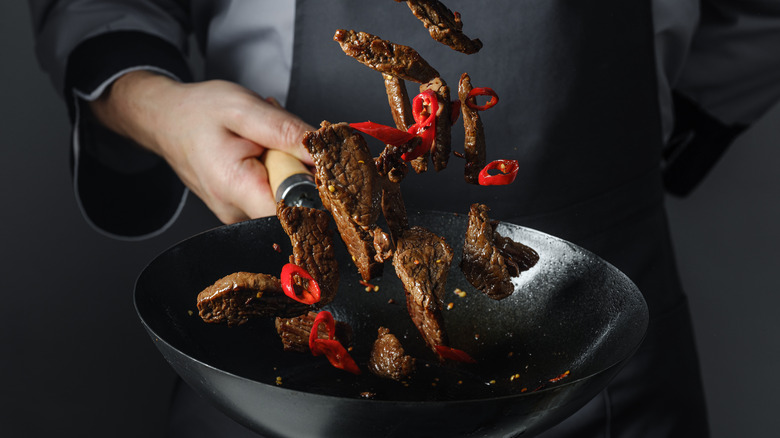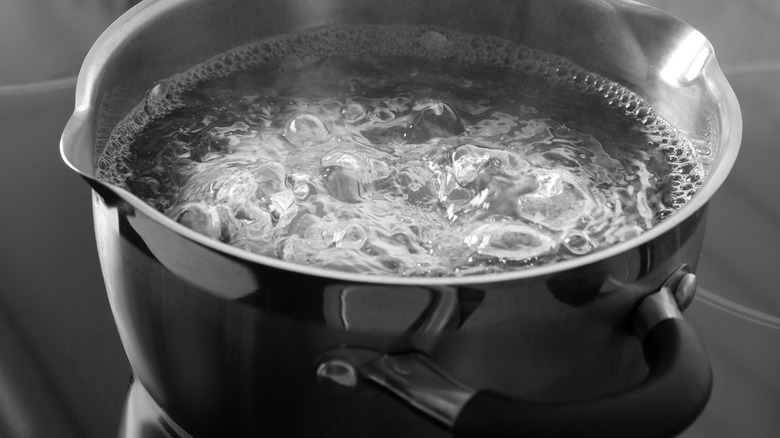This Chinese Cooking Technique Will Achieve The Most Tender Meats
For fans of Chinese food who want to try to re-create some of their favorite restaurant dishes at home, stir fries are a good entry point. The process may seem simple enough: Just combine meat, seafood, or tofu and vegetables in a blazing hot pan, then toss it all in a sweet and savory sauce that can feature soy, rice vinegar, and sugar, among other ingredients (via Serious Eats). But, as with many dishes, it's not really as simple as it seems. There's an important process that anyone who wants to stir fry at home should learn.
Velveting is a Chinese marinating technique meant to lock flavor and moisture into raw meat and seafood before it's incorporated into the hot oil of a stir fry or other preparations, like chicken wings (via The Spruce Eats). Velveting is achieved by cutting the protein into smaller portions or strips, then tossing them in a mixture of egg white, cornstarch or corn flour, rice wine, and salt (via Kikkoman). After marinating in the fridge for about 30 minutes, the protein is quickly par-cooked in oil and drained before it's used in the stir fry recipe. As The Spruce Eats notes, the technique results in chicken, beef, pork, and seafood that's tender, silky, and, well, velvety.
Water-velveting is an easier approach for the home cook
As explained by Serious Eats, velveting is an approach that works well for restaurants, which can keep a pan of oil bubbling away on the stove at all times. But many home cooks might not want to use so much oil just to create one stir fry meal, and for those folks, the outlet recommends a variation on velveting called water-velveting.
The initial process is exactly the same as with regular velveting. The protein is marinated in the egg white, cornstarch, and rice wine mixture and refrigerated for half an hour. The difference is that rather than quickly cooking the meat in oil, water-velveting calls for the marinated meat to be briefly blanched (about 30-40 seconds) in boiling water with about a teaspoon of oil added to it. The meat should then be drained thoroughly, so there is no excess water. That's it. It's then ready to be incorporated into stir fries or other dishes. With the same results as oil blanching, it's a technique that's a bit more approachable for the home cook.

